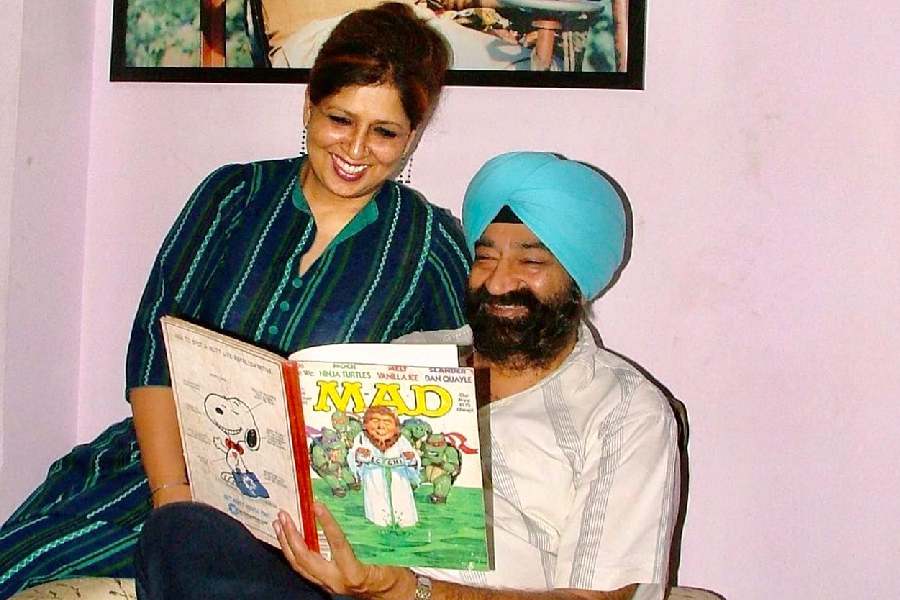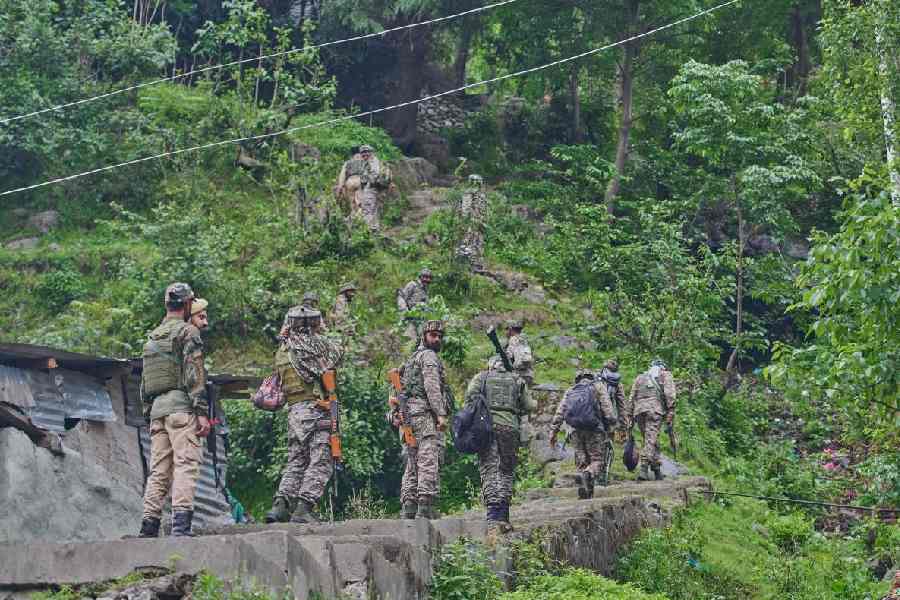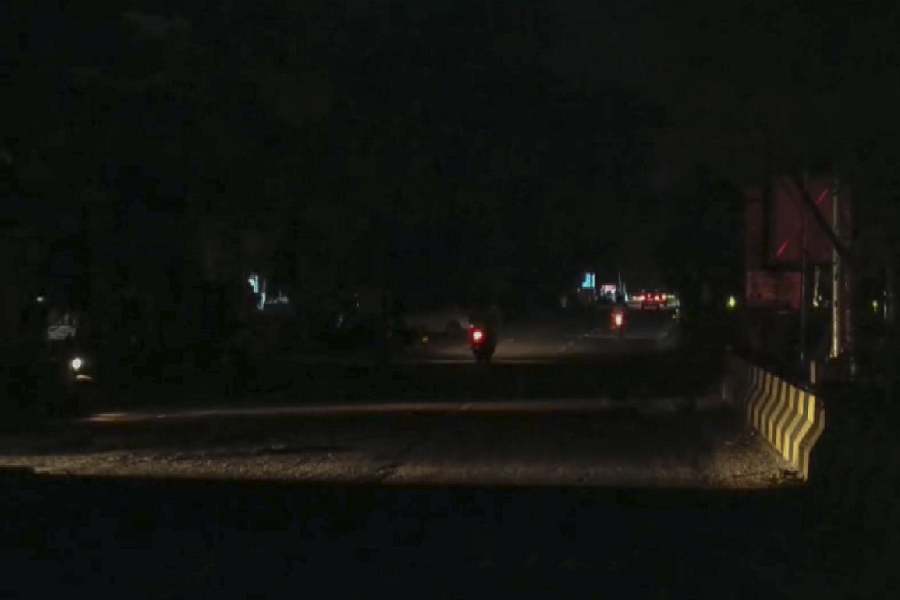 |
| Visitors at a recent film festival in Guwahati and (right) Padum Barua, founder of the first film society in the region. Pictures by Biju Boro and Kanak Kalita |
The overcast sky did not prevent Guwahati film buffs from trickling into the Lakhi Ram Baruah Sadan to watch the screening of three world famous classics — Citizen Kane, Strawberry and Chocolate and The Soft Skin recently. The city’s cinephiles were taken through the cinematic sojourn by the Gauhati Cine Club as part of its routine calendar event.
“The response has been quite good and we have even received requests for repeat screening of certain rare classics. Our target is the serious audience and we do not allow anyone below the age of 18,” says Kanak Kalita, secretary of the club. “We have an ambitious plan of screening 40 rare classics on alternate Sundays from September. We also plan to organise shows in the major towns of Assam,” he says.
It is the film societies, which organise shows, seminars, symposia and workshops, that play an important role in enriching the taste of cineastes. In Assam, two film societies — Gauhati Cine Club and Assam Cine Art Society — play an important role in promoting “good cinema” among the masses.
From the Sixties onwards, the country has had a strong film society movement in several states. There are more than 100 registered film societies in Bengal alone and more than 200 film societies in the eastern region. The film societies have their own forum, the Federation of Film Societies of India (FFSI). The FFSI is an all-India body with four regional centres and more than 500 societies under its fold.
The Gauhati Cine Club, the oldest cine club in Assam, was set up in 1965. Earlier, in 1962, the Shillong Film Society, formed under the initiative of film personality Padum Barua, was the first cine organisation in the region. Barua says, “We had first screened Satyajit Ray’s Pather Panchali at the conference room of District Library, Shillong. Initially, we had 10 members, which later increased to 100. There was hardly any regional cinema then and we used to procure Hungarian, French, Bulgarian and Italian films from the embassies in Delhi.”
In spite of having a strong film society movement over the past 30 years in different parts of India, the scenario in Assam is not at all optimistic. People still throng the theatres screening potboilers and cine societies die a natural death for want of members.
Director Gautam Bora feels, “Merely being fond of watching films is not enough. One must learn to appreciate the nuances of the art. This can be honed through film appreciation courses, seminars and workshops.” The film societies here conduct film appreciation courses, but not on a regular basis.
Bora cites the example of Kerala, where though commercial cinema has always been popular, there has also been an audience for most of the offbeat films made right from the Sixties. “Due to the efforts of film societies in Kerala, the people in almost every town have been exposed to a better kind of cinema from all over the world,” says Bora.
The North East Federation of Film Societies was set up to co-ordinate with the film societies in the other states of the region. “We need to spread to the rural areas and activate the film societies in various towns of Assam,” says Bora.
Assam Cine Art Society, set up in March 1990, had organised a five-day festival of northeastern films in Nandan in Calcutta in 1999. The society also sends its members as delegates to the sessions of International Film Festival of India.
Assam Cine Art Society spokesperson Chandan Sarmah says, “We need our own auditorium or even a projector. There is also a wide gap between serious filmmakers and film lovers. The film societies have to act as a bridge between the two.”
Sarmah laments that there are not enough young and energetic people with proper ideological commitment who are associated with the film society movement. “Some kind of voluntary service is imperative,” says Sarmah.
The Gauhati Cine Club, too, has no permanent land for an office or an auditorium. “However, we have started a library of films and books in our office,” says Kalita. The club publishes a journal on cinema, Chitra Chinta.
“We collect our films from the FFSI and from the various embassies. However, FFSI does not pay much importance to the Northeast but we get help from Cine Central, Calcutta, the largest film society of the world. We also collect films from the directors directly,” says Kalita.
The Ritwiz Cine Art Society, Karimganj, was set up in 1992. “Over the past 10 years, we have organised nine film festivals for both foreign and Indian films. On an average 15 movies were screened at every festival. We have screened more than 150 films so far,” says Ranjit Choudhury, member.
The society has around 70 members and brings out a quarterly magazine called Ritwiz. Due to the lack of a proper auditorium in Karimganj, the society usually organises the festival at the local cinema hall. However, Choudhury laments, “We should get exemption from amusement tax. We also have problems in the collection of films.”
The emergence of television over the past 10 years has affected Indian cinema badly. At a time when film societies are on a decline even in a state like Kerala, television has a major role to play.
“People nowadays are forced to watch the cinema made available in their living rooms. The result is a kind of standardisation in the taste of the audience,” says Sarmah. “The boom in Assamese cinema is not a healthy trend. We have failed to create enough avenues for good cinema among the masses,” he adds.
Folklorist and president of Asam Sahitya Sabha Birendranath Datta says, “The film societies can work at three levels. For students of film as an art and for common viewers who want to appreciate a good film and to make the cinema halls screen meaningful films.”
Many feel that film societies are restricted to screening only abstract and difficult-to-understand cinema. “The very first requirement of a film is that the audience must be able to relate to it. The ordinary cine-goers should derive pleasure from the narrative structure and the intellectuals should be able to feast on the film as a whole,” says director Manju Borah.
Filmmaker Altaf Mazid who had set up Anweshak, a film society with a different attitude, in the Eighties, echoes her views. Mazid says, “We used to screen more Indian and regional films. The film societies should not always be confined to screening foreign classics in a claustrophobic environment. A high cinematic form of a Western film may inspire some of us, but the common man cannot mould himself into that tradition.”
Mazid stresses the need for creating a database for the films of the region. “It is like a desert here. In fact, all the films should be transferred from celluloid to CD with sub-titles and preserved at libraries and museums.”
The Assam directorate of information and public relations has a post of a film officer, which is lying vacant at present. Former film officer and noted filmstar Nipon Goswami says, “We had submitted a proposal to the government to organise a festival of Assamese films at least in the four metros. A collection of select films from Joymati to the present day ones could have been showcased at the festival.”
Mazid is optimistic and feels that each and every postal zone should have a film society. He adds, “These societies will have to play a positive role in their own area. People of every locality should learn the language of camera.”










